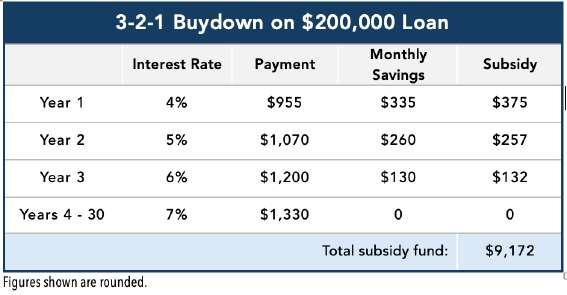
4 minute read
Will 2025 Be the Year of the Buy-Down?
BY ANNA DeSIMONE
For decades, mortgage lenders have originated loans where borrowers paid additional points for the purpose of lowering their interest rate. This practice is known as a “permanent buydown.” Typically, one point might reduce the rate about one-quarter percent for the life of the loan — depending on market rates and other factors.
“Temporary buydowns,” also known as “short-term” or “subsidy” buydowns are structured with lower mortgage payments for an initial period of time, usually two or three years. Temporary buydowns are like escrow disbursements working in reverse.
Buydown funds are held in an escrow account by the lender or loan servicer. Each month, the proportioned amount of money is subtracted from the subsidy account & allocated toward the borrower’s payment. TRID total loan costs and the amortization schedule are the same as a normal mortgage program; no additional financial disclosures are required.
Buydown funds can be funded by the lender, or property seller or other contributed party. Fannie Mae & Freddie Mac impose no limits as to the total amount of the buydown, with the exception of funds provided by certain contributed parties. For conforming loans, temporary buydowns are available on purchase transactions for primary residences & second homes. Freddie Mac permits buydowns on cash-out refinances. They are available on both fixed rate & adjustable rate mortgages, with some ARM restrictions.
Fannie Mae & Freddie Mac require borrower qualification to be based on the note rate. Non-QM lenders may have more flexible underwriting guidelines; rules may vary based upon the length of the buydown term. Depending upon other transaction characteristics, temporary buydowns could be considered a compensating factor.
There are many prospective homebuyers who actually qualify for a mortgage at the current market rate but they are reluctant to stretch their budget — and with good reason. As an example, a family may have weekly child care expenses of $300, which is not factored into the DTI ratio. However, that $1200 monthly obligation may diminish in three years because their child will be enrolled in kindergarten.

The example above illustrates a Three-Two-One buydown, which means that the borrower’s monthly payment is effectively at a rate 3% below market for the first year, 2% below market the second year, and1% below market in the third year. Monthly payments for the actual note rate (7%) begin in the fourth year and continue for the remainder of the loan term. For a $300,000 mortgage, the required subsidy amount is $9,172.
“Two-One” buydowns are popular option, and are structured with a 2% rate reduction in year one, followed by a 1% reduction in year two. On a $200,000 mortgage, the monthly savings would be $260 the first year, followed by $130 the second year. The total subsidy fund for this example would be approximately $4,500.
Borrowers will need to provide a signed agreement from the entity paying for the buydown costs. Financing would be structured similarly to transactions closing costs are rolled into the loan amount. There are no limits to the amount of buydown funds, however, any closing costs being financed must comply with the investor’s financing concession limits. If the borrower sells their home or refinances before the subsidy is depleted, any remaining funds would be applied to the outstanding principal balance.
Fannie Mae published guidance on 8/7/24, Temporary Interest Rate Buydowns, outlining eligible properties & general guidelines. Freddie Mac provides guidance, Temporary subsidy buydown plans, as well as step by step instructions, “How to submit a loan through Loan Product Advisor.” NM
Anna DeSimone is author of Closing the Gap in Homeownership –Re-writing the Rules Against Mortgage Discrimination. She provides consulting services to the mortgage industry at Housing Research, LLC. annadesimone.net




